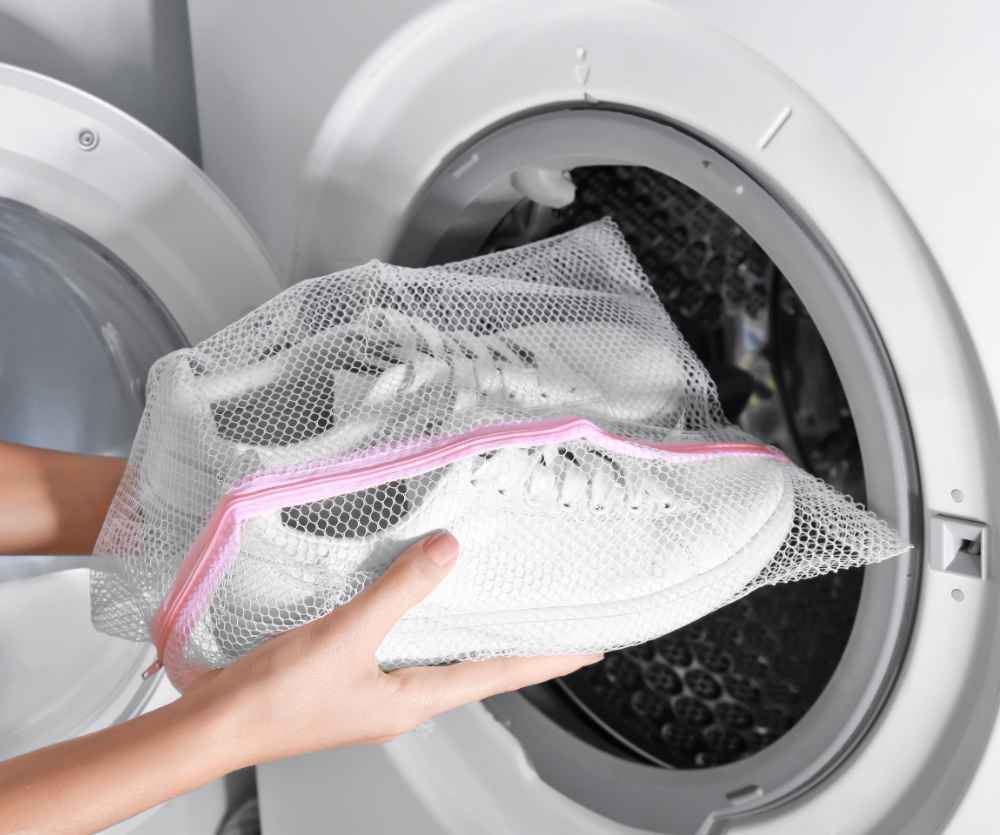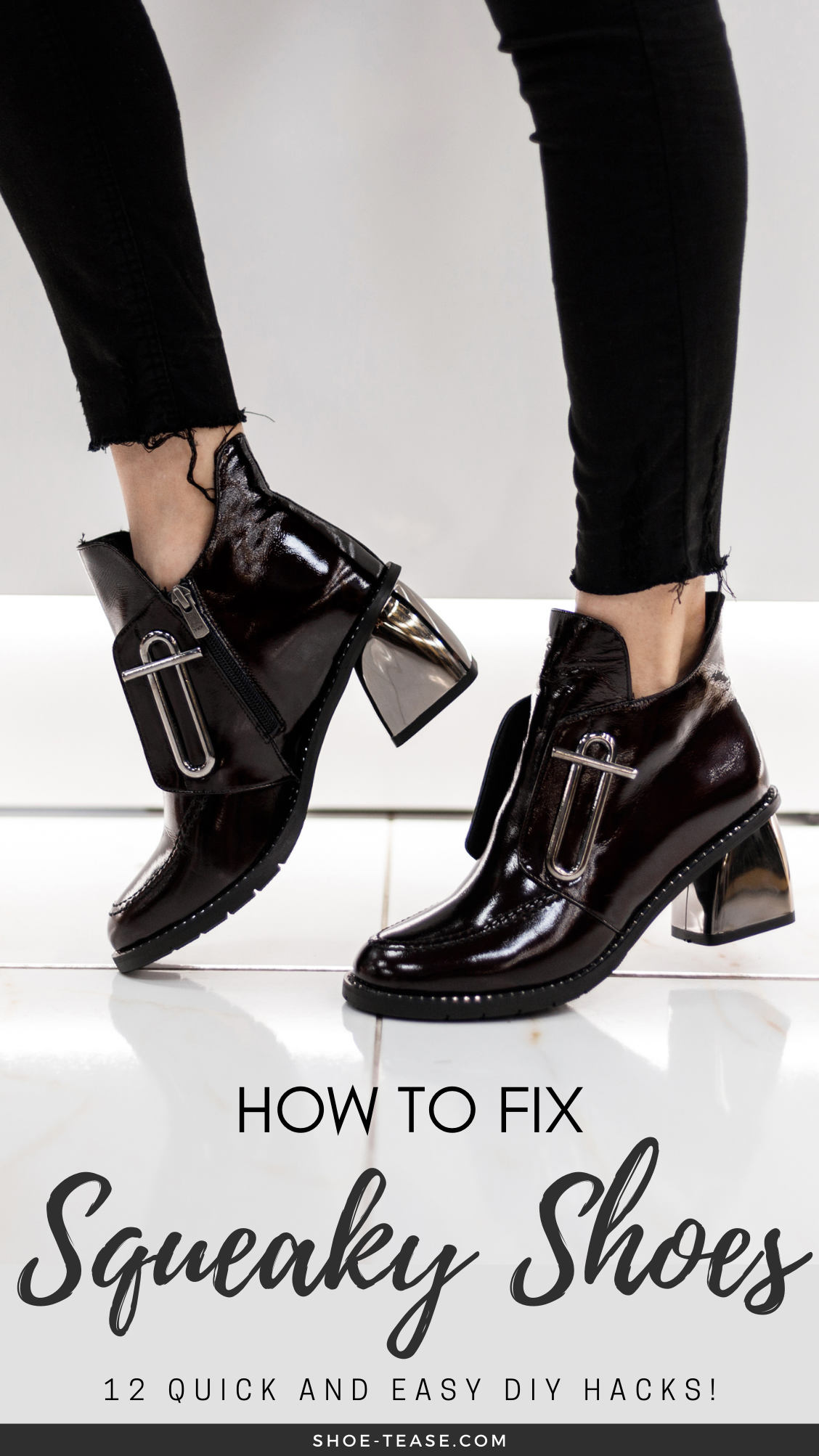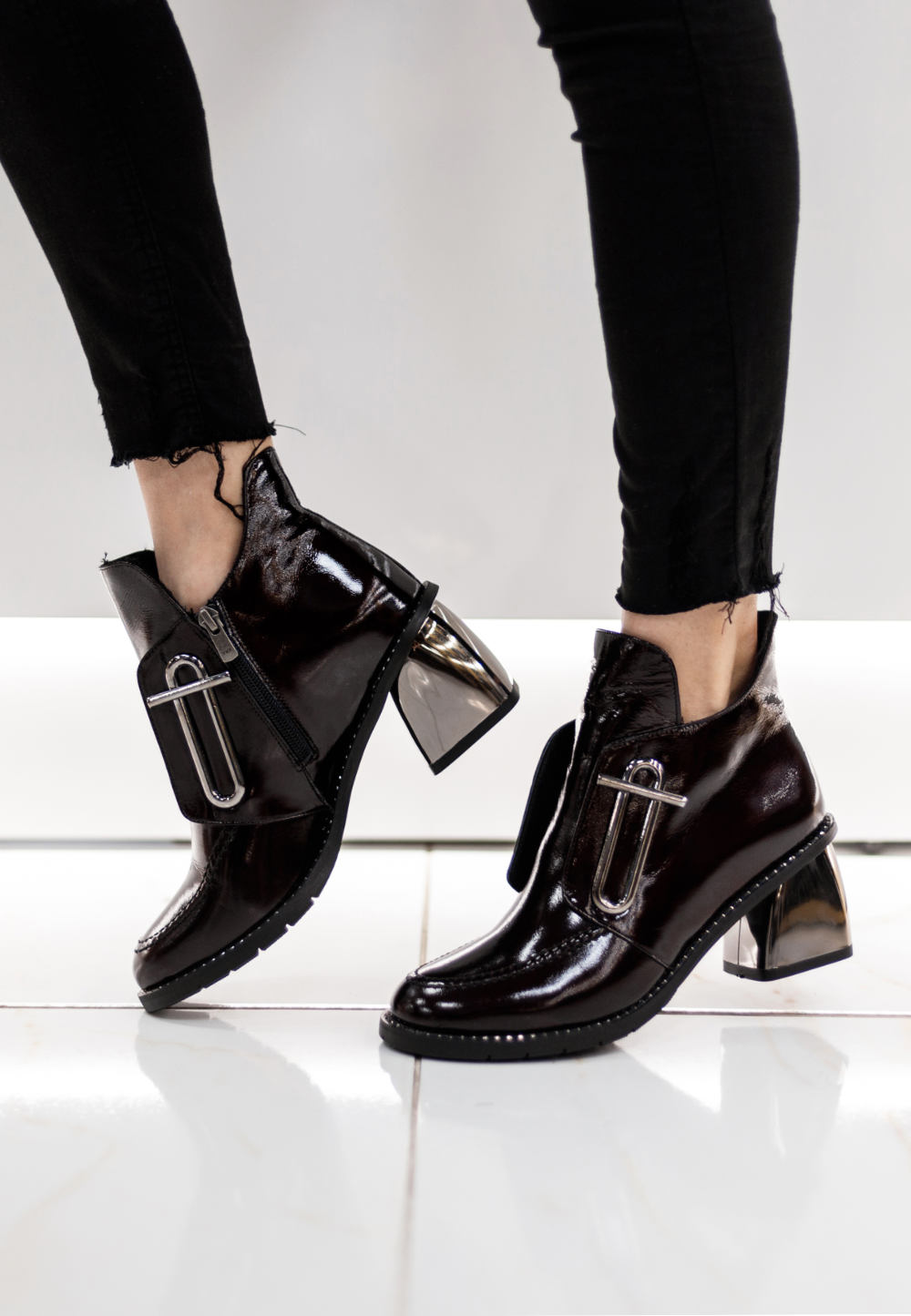Ever had a case of the squeaky shoes? The sound of squeaking shoes as you walk can be irritating and downright embarrassing.
Especially if you're at school or in a formal work setting, such as a quiet office, hall or courtroom. This last one is why I also wrote a post on how to make heels quieter, to reduce clicking sounds!
Before we learn how to stop shoes from squeaking and making all kinds of sounds, we have to get to the bottom of the cause of the squeak.
Your shoes might be squeaking for one of the following 7 reasons:
- Your shoes are brand new
- Wear and tear of old shoes
- There is water in your shoes
- The sole is too smooth
- You're wearing your shoes barefoot
- Shoelaces are causing squeaking
- Shoes don't fit properly
The above reasons can cause shoe squeaking in various parts of the shoe. This can include shoe bottoms, the insoles and the outer parts of the shoes. Even the shoelaces can cause shoes to squeak, including a mix of the above reasons.
Before trying any of the methods below, please make sure to check whether trying to fix squeaky shoes yourself will void your sneaker or shoe warranty!
How to Stop Shoes from Squeaking – 13 Easy Fixes
Fortunately, regardless of where the squeaking of your shoes is coming from, you can usually get shoes to stop squeaking yourself, right at home with some of these quick DIY tricks, targeting specific areas of the shoe!
Part 1 – For Squeaky Outsoles:
More often than not, outsoles of new shoes squeak as they touch the ground as you walk. Usually on slick to slick surfaces such as gym floors or tile.
A second reason – especially for older squeaky shoes – is that the upper of the shoe has detached from the lower part/outsole of the shoe, creating a gap that makes a squeaking noise as you walk or move.
Rub Outsoles with Sandpaper
Using sandpaper with a 120-220 grit can rough up the shoe's outsole enough to improve traction. Not only will this prevent your shoe soles from squeaking on floors, but it is also a great hack to make shoes less slippery, which you can read about in my post.
This method works best with outsoles made of natural and synthetic leather and won't work on rubber soles.
This post may contain affiliate links, and ShoeTease may earn a small commission if you click through and/or make a purchase. Thanks for your support!
Rub with a Dryer Sheet
Speaking of rubber soles, this dryer sheet trick to make shoes less slick works on all kinds of shoe outsole materials. It is also less invasive than the sandpaper method.
Simply rub the sheet onto the bottoms of the shoes a few times to make them less smooth and less prone to squeaking on wooden or tile floors. Repeat anytime you find your shoe soles squeaking again.
Spray with a Grip Adhesive
A silicone sole spray such as WD-40 works well for this. It will give your shoe soles less slick by giving them traction.
Following product instructions, apply it both to both outsoles of your shoes and reapply when soles get squeaky again. There are many types and strengths of shoe grip adhesives and you can shop them here.
Warning: do not use on suede or nubuk shoes, as it could damage the material.
Super Glue Your Soles
If the outsole of your shoes has detached partially from the bottom of your shoe, the gap that is causing squeaking and noise, needs to be sealed. Pick one of the best shoe glues from my dedicated post, such as Gorilla Super Glue.
Apply it to the affected area following manufacturers instructions – and keeping the parts together with a clamp or rubber band – let dry for at least 24 hours.
Part 2 – Solutions for Water Damage:
Stepped in a puddle or run out in the rain or soggy snow? Yes, water damage is a leading cause of squeaky shoes, but there are various ways to fix it, including the ones below. Looking to prevent this problem? Check out my dedicated post to learn how to make shoes waterproof!
That's why I warn my readers of the perils of following certain techniques of how to break in leather shoes!
Let your Shoes Dry
Kind of obvious, but time is a good squeaky shoe healer if water has gotten into the soles or interior portions of your shoes.
This is your first step, even before trying the other shoe drying methods, below. If your shoes are very wet and are made of leather, this is a good time to condition the upper in order to prevent the leather from cracking when they fully dry.
Let your wet/squeaky shoes air dry naturally and not in direct sunlight – ever! If the shoe material can withstand (like some sneakers and canvas shoes) you can use a hairdryer on medium heat, at a foot's distance.
Use Baby Powder
Baby powder AKA talcum powder is amazingly absorbent due the trifecta of its ingredients: magnesium, silicon and oxygen. Bonus: baby powder also reduces friction, and reduce squeaky shoes that much more.
But how to stop shoes from squeaking using baby powder, you ask? You'll want to target the inside of your shoes.
Remove the insoles, loosen the laces and sprinkle the powder around the shoe tongue, lace hole and interior bottom of shoe. Leave on overnight and wipe off using a dry cloth.
Warning: this type of anti-squeaking shoe method can be messy. Also, please use a safe talcum powder that does not contain hazardous ingredients.
Put Shoes in the Dryer

This one's more of a last resort for me, as it could potentially damage shoes if not done correctly. If you resort to this method, put your shoes in a mesh bag or trap sneakers against the door by their laces.
It helps to soak a sponge with some fabric softener and place it inside the dryer along with your shoes.
Put the dryer on air dry setting or lowest temperature for max 10 minutes to avoid shrinking shoes. Repeat if necessary. Best for cotton, canvas and polyester shoes and sneakers.
This is absolutely NOT a method to use for leather, suede or patent shoes that will crack with the heat. More information on how to dry shoes in the dryer in my dedicated post!
Part 3 – Hacks for Squeaky Insoles
If your shoes are squeaking on all surfaces, including grass and carpet, then new insoles moving around and rubbing against the inside of your shoes could be to blame. To prevent noise-causing friction here are some solutions:
Use a Dryer Sheet
Dryer sheets save the day for squeaky shoes yet again. Sandwich a folded sheet under the insole and shoe bottom. Try substituting paper towels if you don't have any dryer sheets lying around, but replace them every few wears.
Sprinkle Baby Powder
This multi purpose product can also be used to prevent insoles from squeaking by sprinkling some under the insole, adding a buffer to the friction.
Wear Socks
Ever thought “why do my shoes squeak when I wear them without socks”? That is friction with the foot's moisture and the insole or inside of the shoe!
So wearing some socks, including no-show socks, can put a less squeaky spring in your step 🙂 Sprinkling a moisture-wicking agent such as baby powder or wearing a moisture-absorbing insole like this one can also help.
Use Lubricant Under the Insoles
If the other methods above didn't work, you can always take to this method, using either coconut oil or Vaseline (petroleum jelly).
Use a cotton ball or cotton round to apply a very small amount of your lubricant of choice to the inside bottom of your shoes, under the insole.
Warning: this method can be messy and stain your shoes, so use with caution.
Part 4 – Use Saddle Soap for Squeaky Shoelaces:
Most people don't know that one of the causes of having squeaky leather shoes stems from the shoe laces! That's because when they rub against the shoe tongue, and the friction can cause squeaking.
To reduce the friction causing the squeaky sound of shoe laces, saddle soap is a great option. Following product instructions, rub laces with saddle soap or another leather conditioner on top of the tongue of the shoe to reduce noise. Reapply as necessary.
Part 5 – For Squeaky Heels Use SuperGlue
Squeaky heels are caused by heels coming loose from the shoe, creating a noisy gap. This is where superglue comes in handy!
Not keen on gluing back your heel or outsole? A local cobbler is a great – and possibly best – option. I mean, who knows how to fix squeaky shoes best than the shoe doctor herself?
Final Thoughts on How to Stop Shoes from Squeaking
As you can see, there are a number of reasons you might have squeaky shoes, from shoe parts rubbing together to slick new soles. Thankfully there are a bunch of solutions for you to try at home!
Worth noting that poor-fitting shoes can also cause squeaky shoes. For instance, shoe scan squeak if they're too small. If you find new shoes are squeaking cause they are a little too tight, you might want to break them in before you try any of the above tricks, as that may easily solve the issue for you.
Check out my post on how to make shoes bigger for some tips on this front! However, keep in mind that shoes can also also squeak if they are too big, so make sure you purchase shoes that fit just right when you can!
Any other tips that you would add to this list of how to stop shoes from squeaking? Let me know, in the comments And feel free to read my other shoe repair posts while you're at it!
Disclaimer: Attempting any of the above methods to fix squeaky may cause irreparable damage to your beloved shoes, heels & boots. ShoeTease and its partners are not liable for any damages to persons or property arising from any of the advice given in this post. Please Follow advice at your own risk. For best results, take your precious footwear to a professional who specializes in shoe repair and knows best how to stop shoes from squeaking.

xo ShoeTease
Cristina is the chief editor & shoe expert at ShoeTease. As a seasoned stylist and women's fashion & shoe designer with over 20 years of experience, Cristina's here to guide you on your fashion journey! Learn more.
This post may contain affiliate links. ShoeTease may earn a small commission if you click through and/or make a purchase. Thanks for your support!
